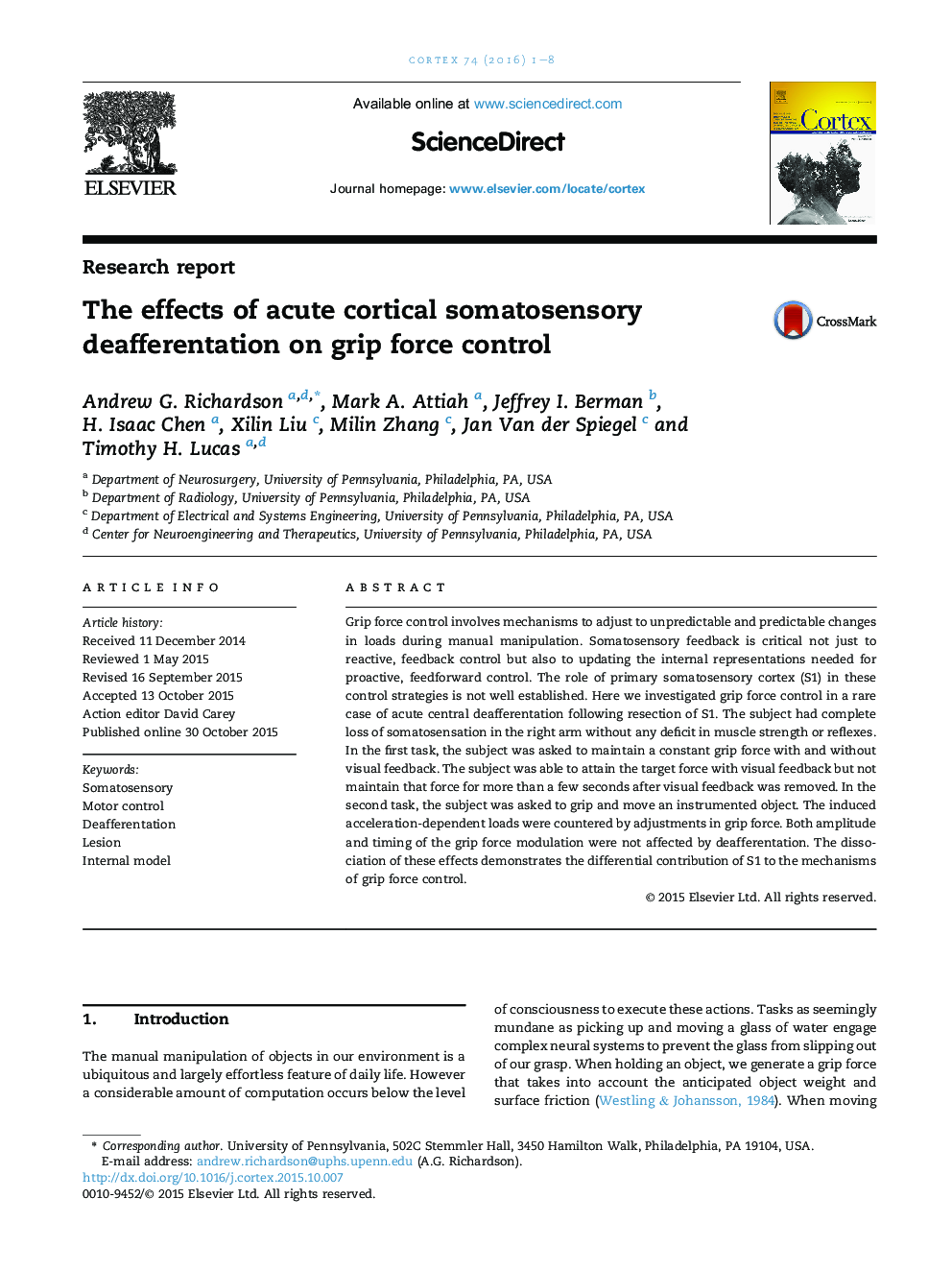| Article ID | Journal | Published Year | Pages | File Type |
|---|---|---|---|---|
| 7313426 | Cortex | 2016 | 8 Pages |
Abstract
Grip force control involves mechanisms to adjust to unpredictable and predictable changes in loads during manual manipulation. Somatosensory feedback is critical not just to reactive, feedback control but also to updating the internal representations needed for proactive, feedforward control. The role of primary somatosensory cortex (S1) in these control strategies is not well established. Here we investigated grip force control in a rare case of acute central deafferentation following resection of S1. The subject had complete loss of somatosensation in the right arm without any deficit in muscle strength or reflexes. In the first task, the subject was asked to maintain a constant grip force with and without visual feedback. The subject was able to attain the target force with visual feedback but not maintain that force for more than a few seconds after visual feedback was removed. In the second task, the subject was asked to grip and move an instrumented object. The induced acceleration-dependent loads were countered by adjustments in grip force. Both amplitude and timing of the grip force modulation were not affected by deafferentation. The dissociation of these effects demonstrates the differential contribution of S1 to the mechanisms of grip force control.
Related Topics
Life Sciences
Neuroscience
Behavioral Neuroscience
Authors
Andrew G. Richardson, Mark A. Attiah, Jeffrey I. Berman, H. Isaac Chen, Xilin Liu, Milin Zhang, Jan Van der Spiegel, Timothy H. Lucas,
